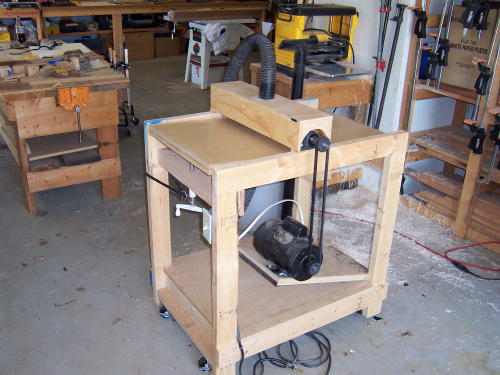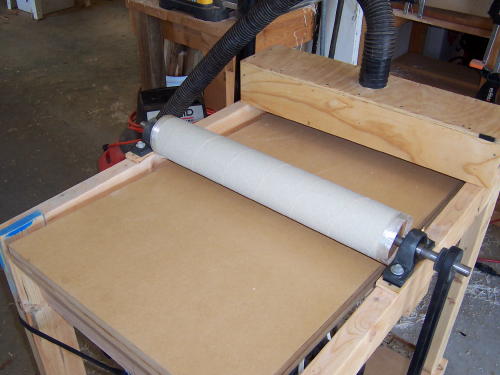Frank, those are very good questions. Now I'll first state that my experience is very limited as I am just completing my second guitar. So please take that into consideration with my advice, but here it goes.
In the last year (maybe a bit more) that I've been building, I've spent a ton of money on things I really didn't need. It's hard to know exactly how you want to approach building, and it's not easy seeing ahead of time all the pertinent tools you'll want/need.
That being said, I can honestly say that if I had it all do to over again, the first, and I do mean the VERY FIRST tool that I would buy, is a good capacity drum sander... I can't recall all the times that I wished for one. Thicknessing plates, finger boards, bridge blanks, end-grafts, braces, brige patches and on and on... Think about it. How many times do you have to thickness stock while building a guitar?
As for thicknessing and joining after. I think the reservation against this is that you might find it harder to put pressure on thin plates while joining them and that they will tend to warp/move more than thicker stock. Some will argue that the fit should be perfect and that hardly any pressure is needed anyways... This is true too. I don't really see why a set of plates that 'candle' perfectly should need to be very thick to be joined...
But again, with a good thickness sander, you can join thick, pass it under the drums a few times and you have a nice uniform plate. The finish can be very good if you have a double roller machine.
By the way, I don't know how much of a 'machine head' you are, but some very gifted/renowned builder have successfully built their own thickness sanders at a fraction of the cost. If you're a gifted jig-master, this might be a viable alternative. Just a thought...
Hope this helps.
Cheers,
Alain
Alain Desforges38911.934525463
|

 but let me just say this, one of the first jigs i made to help me pronto and save a few bucks was my 18" drum sander, you have a lot of info on the net to help you build one, you can either have a free plan or buy one, i think the name that comes to mind for the free plan is Dominic P, you might want to copy and paste this link in your browser! Check it out!
but let me just say this, one of the first jigs i made to help me pronto and save a few bucks was my 18" drum sander, you have a lot of info on the net to help you build one, you can either have a free plan or buy one, i think the name that comes to mind for the free plan is Dominic P, you might want to copy and paste this link in your browser! Check it out!





